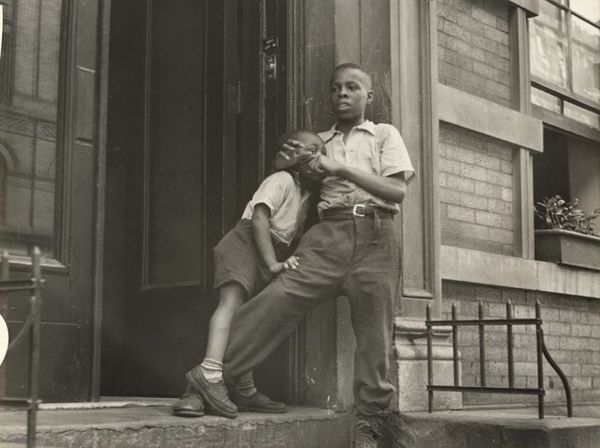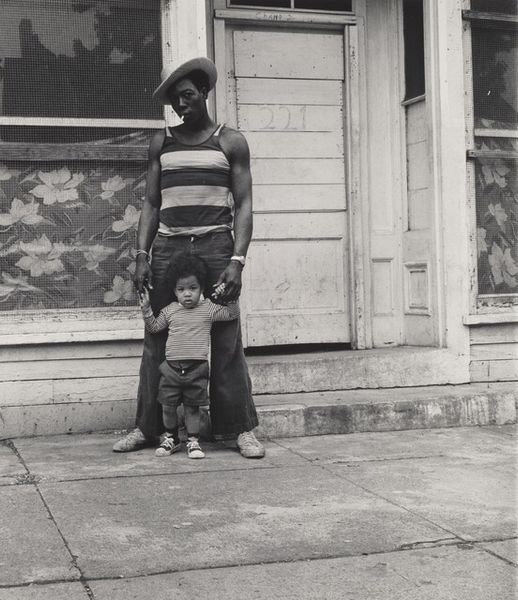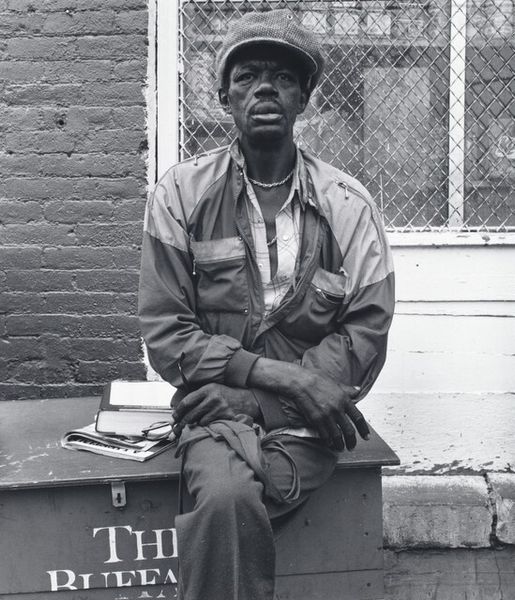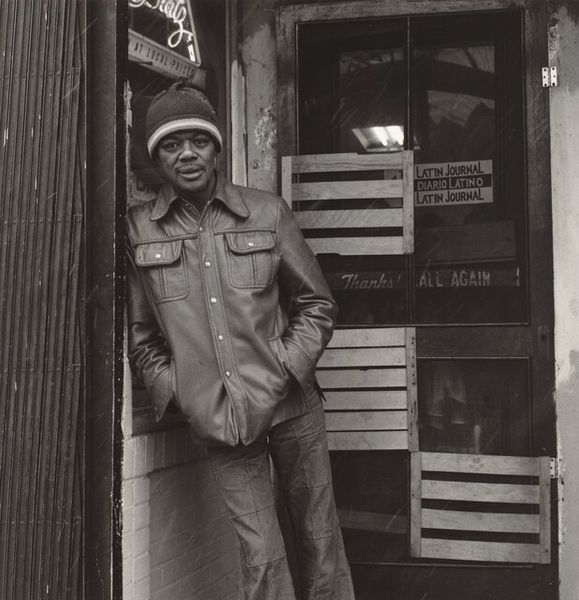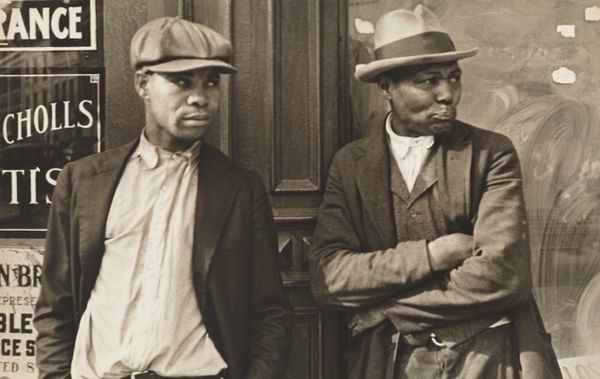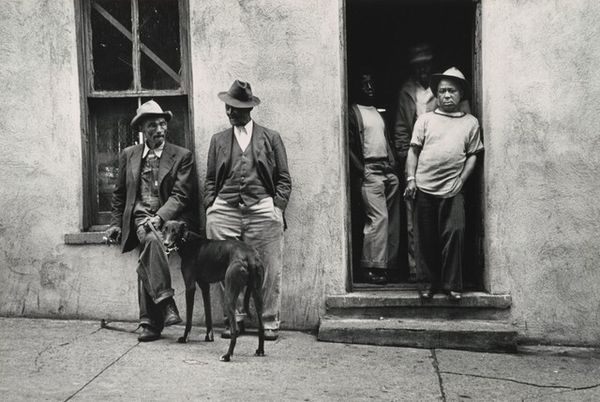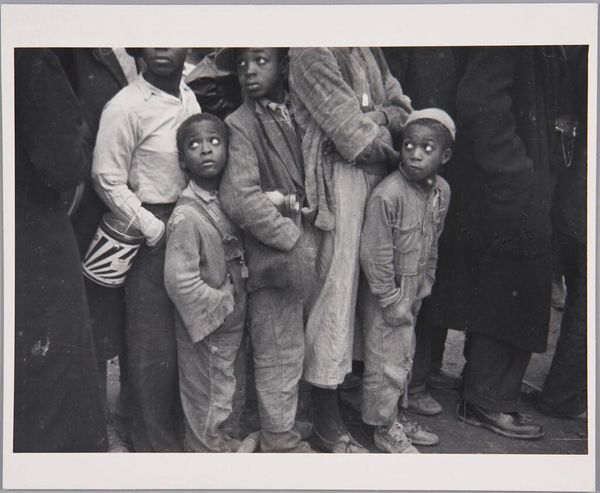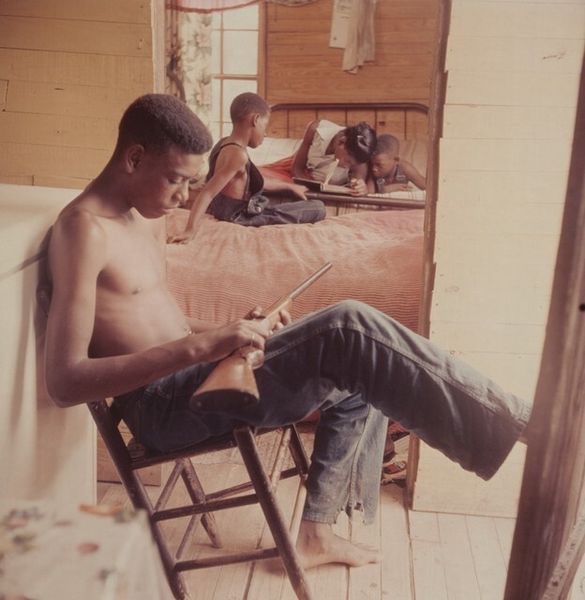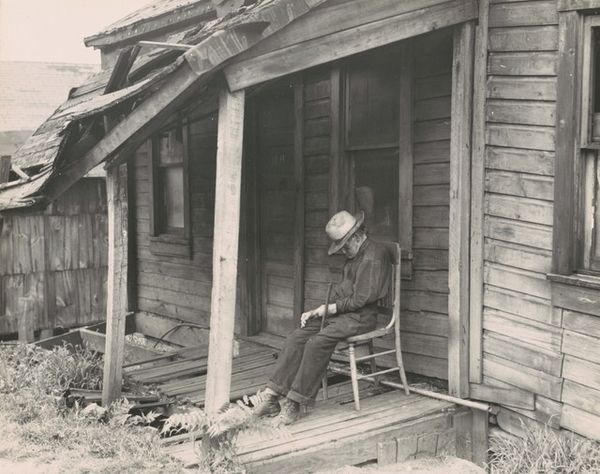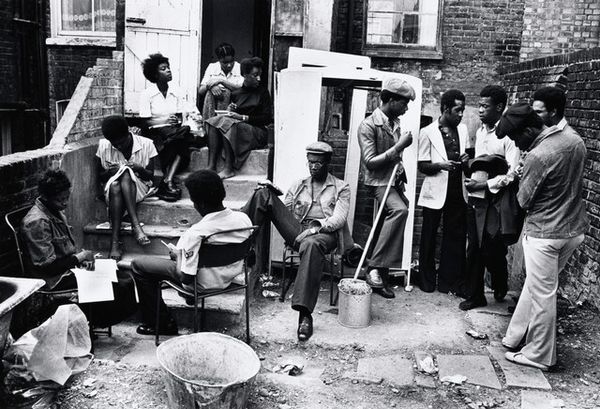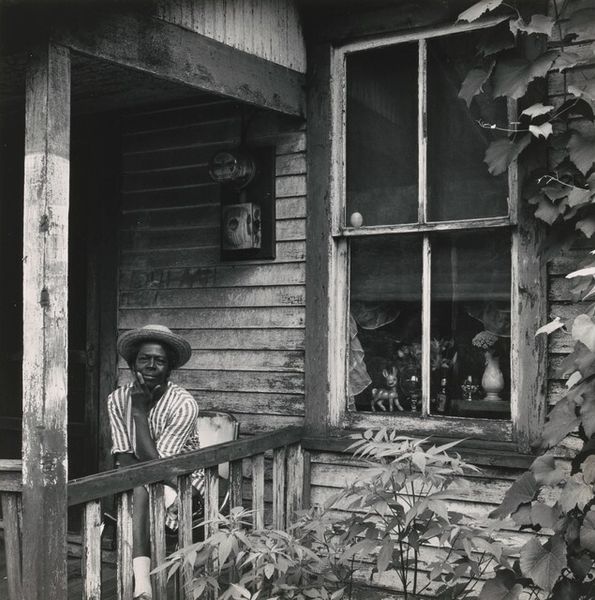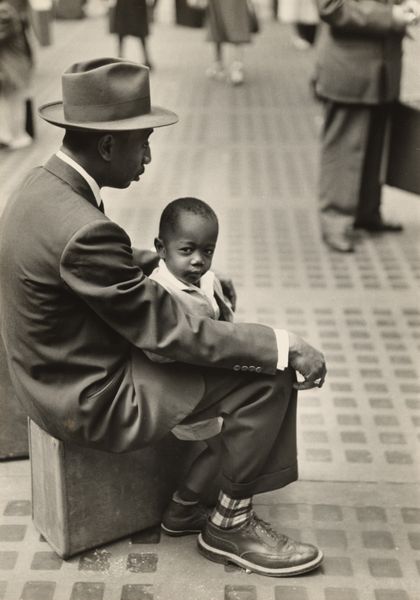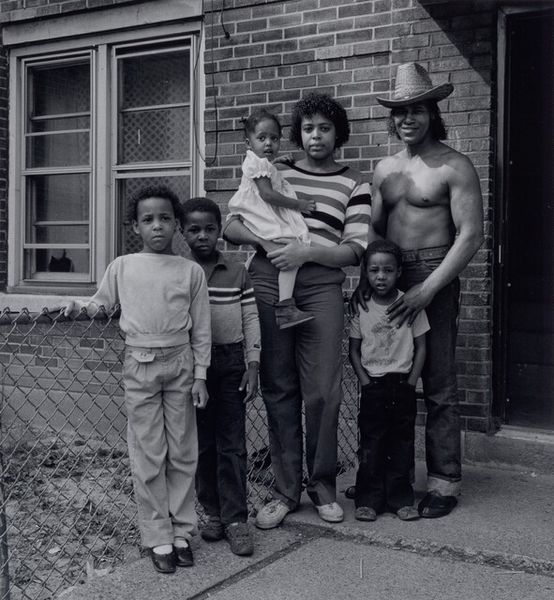
Jimmy Webster with his Father, Verne (Lower West Side series) 1973
0:00
0:00
photography
#
portrait
#
black and white photography
#
cool tone monochrome
#
street shot
#
black and white format
#
social-realism
#
archive photography
#
street-photography
#
photography
#
black and white theme
#
black and white
#
monochrome photography
#
street photography
#
monochrome
#
monochrome
Dimensions: image: 17.4 x 15.5 cm (6 7/8 x 6 1/8 in.) sheet: 25.2 x 20.3 cm (9 15/16 x 8 in.)
Copyright: National Gallery of Art: CC0 1.0
Editor: This is Milton Rogovin’s "Jimmy Webster with his Father, Verne," from 1973. It’s a black and white photograph, very intimate. There’s a stillness to it, despite what I imagine was probably a very active street scene. What do you see in this piece, from your perspective? Curator: I see a powerful visual statement about community and resilience, rooted in Rogovin’s commitment to documenting the lives of working-class families. Knowing this is part of his "Lower West Side" series contextualizes it. The photograph isn't just a portrait, but a document of social history. Consider how the setting – a simple porch – speaks volumes about their living conditions. Editor: So the setting is as important as the subjects themselves? Curator: Absolutely. It grounds them in a specific reality, challenging romanticized notions of family and neighborhood. Rogovin gives us an unvarnished look at everyday life, where race and class intersect. How does the father’s posture, his gaze, make you feel? What is it about it that you read into it? Editor: He seems protective, but also weary. There’s a tenderness in the way he holds his son, but also a kind of… resignation? Curator: That’s a compelling reading. Think about the political context: the Civil Rights Movement, ongoing struggles for economic equality… Rogovin’s work isn't detached; it's a form of social activism, demanding we recognize the humanity and dignity of people often marginalized. Editor: I hadn’t considered it in that way, I was just focused on the surface, and the interaction of the two figures. It makes me want to research more of his work, to learn more about the Lower West Side at the time. Curator: That's exactly the power of socially engaged art, right? It sparks inquiry and challenges us to confront uncomfortable truths about our society. Editor: I definitely have a new appreciation for what Rogovin was trying to communicate through his photography, and will adjust the guide’s text.
Comments
No comments
Be the first to comment and join the conversation on the ultimate creative platform.
